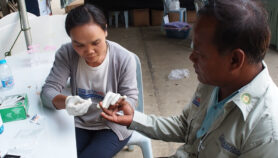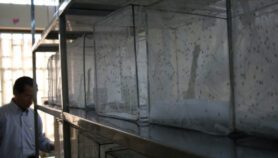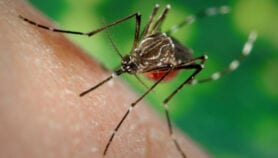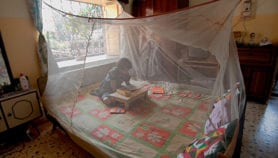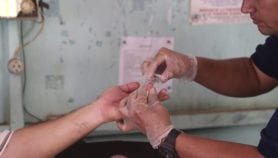By: Brendon Lee
Send to a friend
The details you provide on this page will not be used to send unsolicited email, and will not be sold to a 3rd party. See privacy policy.
[KUALA LUMPUR] A collaboration between malaria research organisations and Myanmar’s health ministry has made progress in combatting a drug-resistant strain of the disease, a study has found.
Mass anti-malarial drug administration provided an effective strategy, according to a study recently published in Malaria Journal (16 August).
Malaria is an endemic disease and subject to seasonal changes. But the combined factors of political instability and internal displacement of Myanmar’s diverse ethnic minorities intensify the challenge of providing treatment to remote communities, many of which reside in mountainous areas.
Malaria intervention programmes in Myanmar have been implemented for decades with artemisinin as the most effective form of treatment. But the emergence of a drug-resistant strain of the Plasmodium falciparum parasite in Cambodia prompted immediate and more aggressive methods to halt the spread of the disease.
In May 2010, surveys were started in three villages along the Thailand-Myanmar border using a highly sensitive polymerase chain reaction test. Malaria infections were quickly detected from gathered blood samples.
“We consider this campaign a partial success… But the ideal scenario would be the total elimination of the disease.”
– Francois Nosten
The objective of the campaign was to eliminate the artemisinin-resistant strain with mass-treatment across village populations. Traditional artemisinin treatments are applied only when the patient starts to show symptoms. The new campaign instead employed prevention measures by screening and treating asymptomatic patients. A full three-day course of dihydroartemisinin-piperaquine or DHP treatment is administrated at monthly intervals for three months, and part of the chemo-prevention methods aimed at eliminating all traces of malaria at the early stages.
Results of post-chemoprevention surveys conducted in June to December 2012 showed an overall reduction in the prevalence of malaria among the village population. Most noteworthy was the huge drop in detected cases of Plasmodium falciparum during the rainy season to just 46 cases from 290 cases the year before.
“We consider this campaign a partial success as we have managed to decrease cases of malaria dramatically. But the ideal scenario would be the total elimination of the disease,” says Francois Nosten, a principal author of the study.
“To achieve that, we would need to address political instability as we face security issues when transporting supplies to remote regions,” he adds.
On the issue of counterfeit drugs, which is hypothesised as the cause of artemisinin-resistant strains, Nosten explains this is being addressed with the introduction of mobile clinics in villages to enable quicker access to proper medication and anti-malaria clothing.
He also adds that poor storage in hot and humid environments may be one of the factors for sub-standard medication quality.
The intervention is part of the Myanmar government’s efforts to eliminate malaria from the country by 2030. According to Thein Thein Htay, deputy health minister, the next step would be the pre-elimination phase that will cover all regions by 2025.
> Link to full paper in Malaria Journal
This article has been produced by SciDev.Net's South-East Asia & Pacific desk.
This article was amended on 3 September.
References
Malaria Journal doi: 10.1186/s12936-015-0838-5 (2015)




